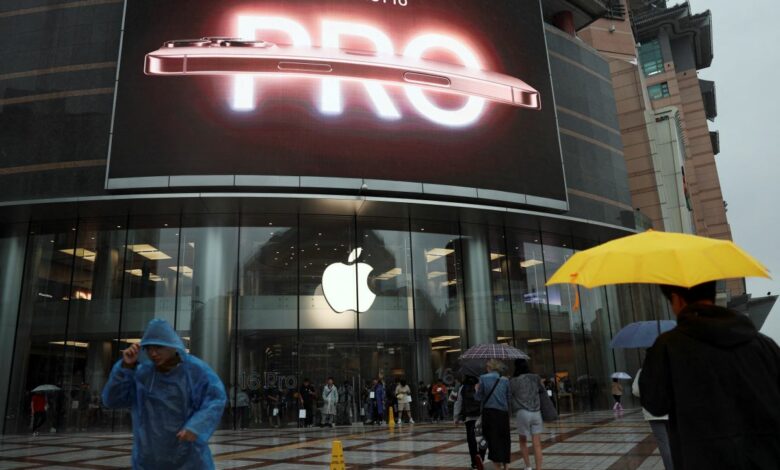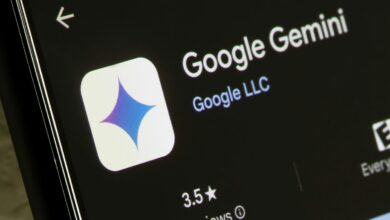Apple offers modest growth prospects after boost from strong iPhone sales

Apple’s AI-powered iPhone got off to a strong start, sending quarterly revenue ahead of Wall Street expectations, but a modest revenue forecast raised questions about whether that momentum will hold through the holiday season.
A drop in sales in China during the fourth quarter also worried some analysts and investors, sending shares down 1.4% in after-hours trading despite surprisingly strong profits and sales in the period.
Chief Financial Officer Luca Maestri told analysts on a conference call that Apple expects total revenue to “grow in the low to mid single digits” during its first fiscal quarter, which ends in December. Analysts had expected revenue growth of 6.65% to $127.53 billion during the quarter, according to LSEG data.
Apple did say it expects double-digit growth in its services business in the first quarter, leading some analysts to ask executives on a call whether overall hardware revenues could decline.
Executives didn’t answer that question or give any indication of how the iPhone might fare, including in China, where Apple’s new AI features aren’t available. Apple hasn’t said when they will be available.
Ahead of management’s call with analysts, Tom Forte, an analyst at Maxim Group, attributed Apple’s share decline to Chinese sales coming in below expectations in the fourth quarter.
“We see the potential for continued weakness in China,” he said.
Apple said total fourth-quarter revenue was $94.93 billion, ahead of Wall Street targets of $94.58 billion, according to LSEG. Earnings of $1.64 per share, excluding a huge one-time tax charge in the European Union, beat analysts’ expectations of $1.60 per share.
Sales of Apple’s iPhone, the company’s flagship product, rose 5.5% to $46.22 billion in the fourth quarter, compared with analyst estimates of $45.47 billion. Other product lines missed expectations.
Apple’s fourth quarter ended on September 28, meaning it reflects just a few days of sales from the iPhone 16 series that went on sale on September 20. Apple Chief Executive Tim Cook told Reuters that iPhone 16 sales grew faster than iPhone 15 sales a year earlier, with both phones on sale the same number of days in the fourth quarter.
Cook also said Apple customers are downloading a new version of their iPhone operating system with what they call Apple Intelligence features at twice the rate of the year before.
“We’ve already had great feedback from customers and developers,” said Cook. “We’re off to a good start.”
AI strategy
The rollout of Apple’s artificial intelligence strategy, which Apple unveiled this year, depends on how well its new phones sell.
Rather than introducing AI into a standalone app or service, Apple has pushed Apple Intelligence into its most recent operating systems as new features, such as the ability to help rewrite an email in a more professional tone. These features will mainly be available on iPhone 16 models, which have more powerful computer chips, although the pro versions of the iPhone 15 both work with Apple Intelligence.
While some of these Apple Intelligence features arrived this week, others have been delayed, leading some Wall Street analysts to wonder whether consumers will be slower to upgrade their devices this year as key software features trickle down.
Apple’s rivals Microsoft and Meta both said this week that they expect continued increases in spending to support their AI strategies. Apple said payments for property and equipment – a measure of capital expenditures – increased by $2.91 billion from the previous quarter to $9.45 billion.
Apple’s lower spending is partly because it uses third-party data centers for some AI work. Some aspects of Apple Intelligence rely on Apple’s own data centers, but the company uses its own internal chips to power these functions.
“There would obviously be some (financial) benefit to us if we used our own silicon, but that’s not why we do it. We do it because we can provide the same standard of privacy and security that we can provide on the device,” Cook said.
Revenue from Apple’s services business, which also includes iCloud storage and Apple Music, was $24.97 billion, according to LSEG, compared to analysts’ expectations of $25.28 billion. Sales of Macs and iPads were $7.74 billion and $6.95 billion, respectively, compared to estimates of $7.82 billion and $7.09 billion, according to LSEG data.
Revenue from Apple’s home and wearables businesses, which includes the Apple Watch and AirPods devices, fell to $9.04 billion, compared with estimates of $9.2 billion, according to LSEG.
Earnings per share amounted to 97 cents, including charges related to a one-off European tax payment of several billion euros.
© Thomson Reuters 2024
(This story has not been edited by NDTV staff and is auto-generated from a syndicated feed.)




